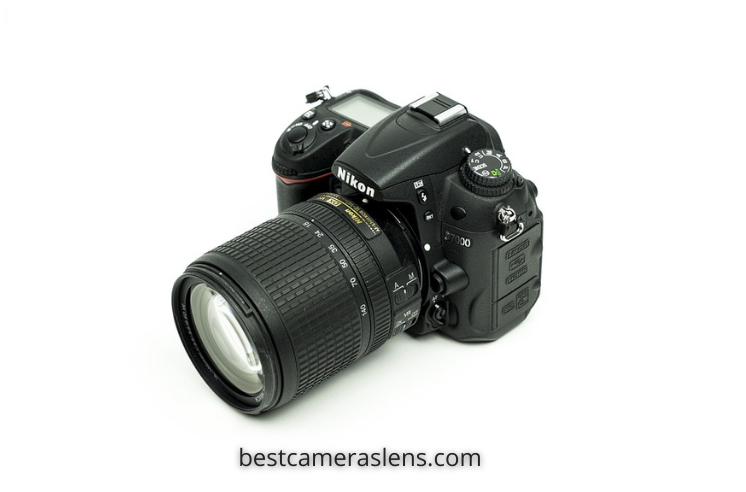When searching for the best lens for fashion photography Nikon, the top-notch is critical. The business is extremely aggressive that nothing average will truly fly. Searches for a focal point that utilizes flawless high-grade glass, ideally with some fluoride covering to dispose of light glares. Sharpness, clearness, and insignificant commotion are likewise central points when purchasing a camera focal point for a design photography. Here is our rundown of a few incredible competitors for the best lens for fashion photography.
1. Nikon AF-S 35mm f/1.8G Lens
Main Features:
- F-Mount Lens/DX Format
- 52.5mm (35mm Equivalent)
- Gap Range: f/1.8 to f/22
- One Aspherical Element
- Very Integrated Coating
- Quiet Wave Motor AF System
- Adjusted 7-Blade Diaphragm
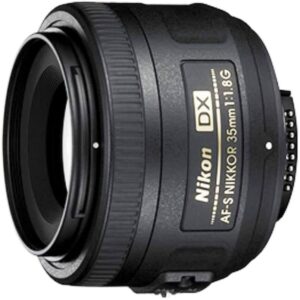
Almost really adaptable, the AF-S DX NIKKOR 35mm f/1.8G from Nikon is a 52.5mm-comparable focal point for DX-design cameras and is described by its smooth structure factor, the typical field of view, and brilliant f/1.8 greatest opening. The quick plan of the focal point suits working in troublesome lighting conditions and furthermore empowers further developed command over the profundity of the field for disengaging subjects and working with particular center methods.
The optical plan joins one aspherical component, which assists with controlling twisting and round deviations to create striking sharpness and clearness.
2. Nikon AF-S FX NIKKOR 20mm f/1.8G Lens
Main Features:
- F-Mount Lens/FX Format
- Gap Range: f/1.8 to f/16
- Two Aspherical Elements, Two ED Elements
- Nano Crystal and Super Integrated Coatings
- Quiet Wave Motor AF System
- Adjusted 7-Blade Diaphragm
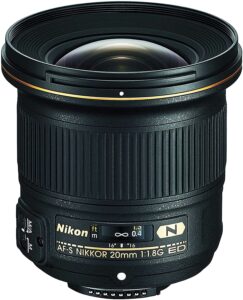
A shrewd super-wide, the AF-S NIKKOR 20mm f/1.8G ED from Nikon mixes an advantageous expansive field of view with a smooth structure factor, a brilliant plan, and a complex optical format. The quick f/1.8 most extreme opening dominates in troublesome lighting conditions and furthermore offers expanded command over the profundity of field. The optical plan fuses both aspherical and extra-low scattering components to limit round and chromatic deviations for more prominent sharpness and clearness. Likewise, both Nano Crystal and Super Integrated Coatings have been applied to lessen flare and ghosting for further developed differentiation and shading precision.
3. Nikon AF S 85mm f/1.8G Lens
Main Features:
- F-Mount Lens/FX Format
- Gap Range: f/1.8 to f/16
- Very Integrated Lens Coating
- Quiet Wave Motor AF System
- Adjusted 7-Blade Diaphragm
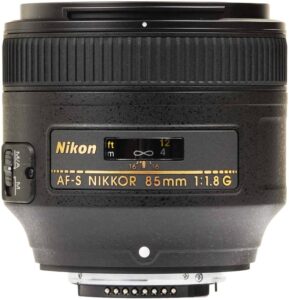
An exceptionally advantageous central length for a picture, the AF-S NIKKOR 85mm f/1.8G from Nikon is a short-fax prime highlighting a brilliant f/1.8 most extreme opening. This plan observes balance between a lightweight, smaller structure factor while likewise being quick to the point of adequately controlling the profundity of field and suit working in low light. Individual focal point components highlight a Super Integrated Coating, which controls flare and ghosting to create more noteworthy differentiation and shading devotion when working in brilliant and illuminated conditions.
4. Nikon AF FX 35mm f/1.4G Lens
Main Features:
- FX-design, the super quick exemplary wide-point focal point
- Central Length: 35 mm, Minimum Focus Distance – 1.0 ft
- Nano Crystal Coat, Optimized for edge to edge sharpness on both FX and DX-design D-SLRs
- Aspherical Lens Element. Back Focus (RF)
- The most extreme point of view (DX-design): 44°, Maximum point of view (FX-design): 63°
- FX-design, the super quick exemplary wide-point focal point
- Central Length: 35 mm, Minimum Focus Distance – 1.0 ft.
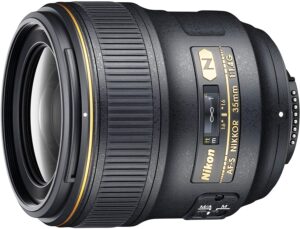
The new AF-S NIKKOR 35mm f/1.4G is an update of one of Nikon’s generally regarded and famous NIKKOR focal points and consolidates a characteristic yet adaptable 35mm viewpoint with a super quick f/1.4 opening. The f/1.4 most extreme opening permits picture takers to shoot handheld in low light and gives sensational partition among subjects and a mellowed foundation – especially helpful when shooting natural representations, weddings, engineering, travel, and photograph reporting.
5. Nikon AF-S 200-500mm f/5.6E Lens
Main Features:
- F-Mount Lens/FX Format
- Opening Range: f/5.6 to f/32
- Three Extra-Low Dispersion Elements
- Very Integrated Coating
- Quiet Wave Motor AF System
- Vibration Reduction with Sport Mode
- Electromagnetic Diaphragm Mechanism
- Separable, Rotatable Tripod Collar
- Adjusted 9-Blade Diaphragm
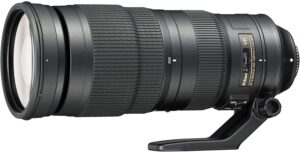
Crossing a long, flexible zoom range, the AF-S NIKKOR 200-500mm f/5.6E ED VR Lens from Nikon is a fax zoom described by a steady f/5.6 most extreme opening for predictable execution all through the zoom range.
The optical plan fuses an additional three low scattering glass components to decrease chromatic variations and bends for expanded sharpness and shading exactness. Additionally adding to further developed picture quality, a Super Integrated Coating has been applied to focal point components to decrease flare and ghosting for further developed difference and clearness.
Frequently Ask Question(FAQ)
Q. Which Nikon lens is best for fashion photography
Following is the top 5 best lenses for fashion photography
- Nikon AF-S 35mm f/1.8G Lens
- Nikon AF-S 20mm f/1.8G Lens
- Nikon AF S 85mm f/1.8G Lens
- Nikon AF 35mm f/1.4G Lens
- Nikon AF-S 200-500mm f/5.6 Lens
Q. Which camera lens is best for fashion photography?
35mm Lens. 35mm focal points are devices of explicitness and they are frequently adored as the narrating focal point for their capacity to catch more than basically a lovely picture. The 35mm central length is great for inconceivable natural pictures where the subject is the primary concentration for both representation and style photography.
Q. What is the best aperture for fashion photography?
The ideal gap for design photography is f4. 0. Here is what you need to accomplish when going for a design brand, or shooting a style article: a sufficiently obscured foundation, a sharp face, and sharp garments (and some things frill as well). A gap of 4.0 will give you that equilibrium
Q. Which lens is better 35mm or 50mm?
While a 50mm prime focal point will provide you with a field of perspective on just shy of 40 degrees, the 35mm prime focal point gives you 54.4 degrees – altogether more extensive. Large scenes normally request wide points, and 35mm is a greatly improved decision.
